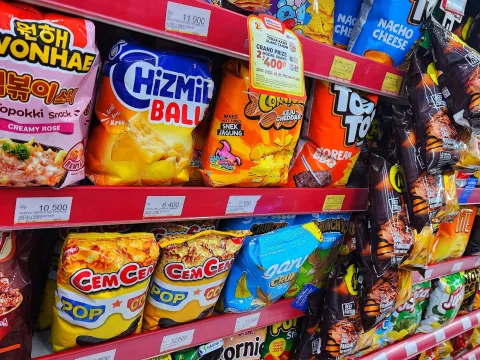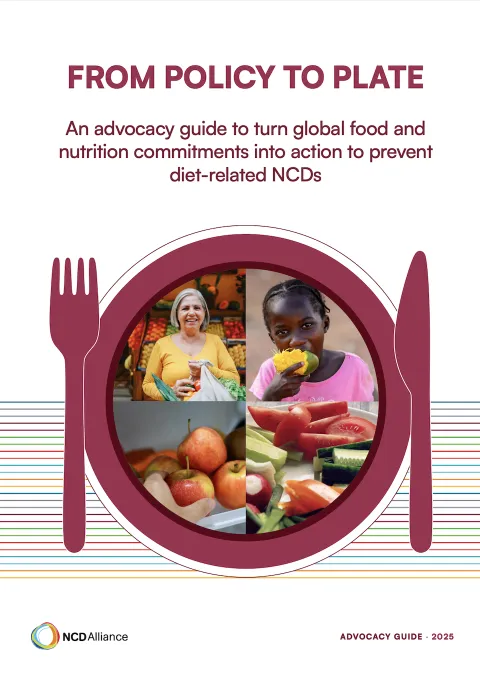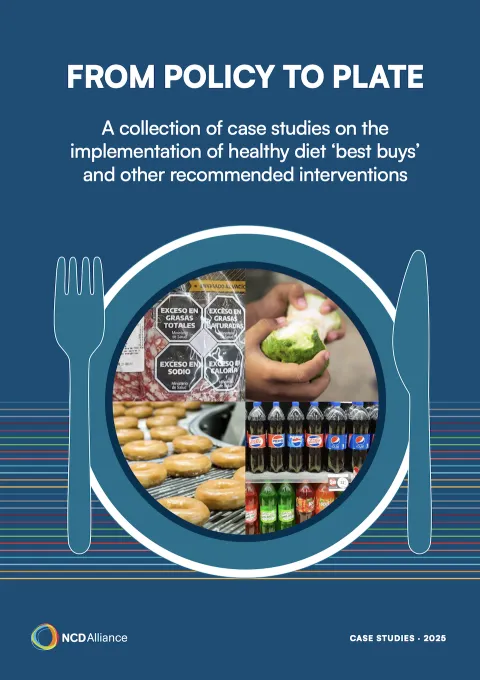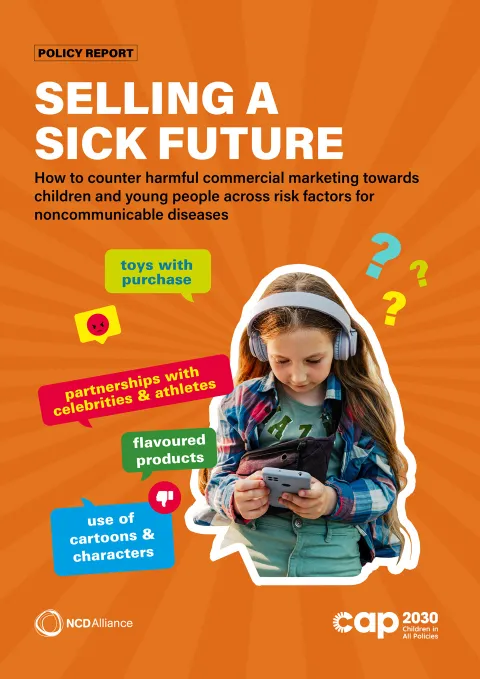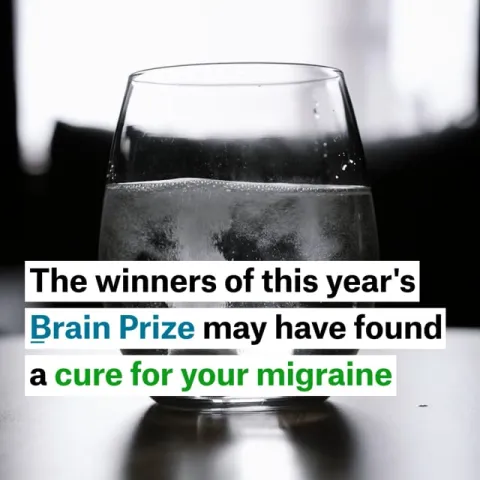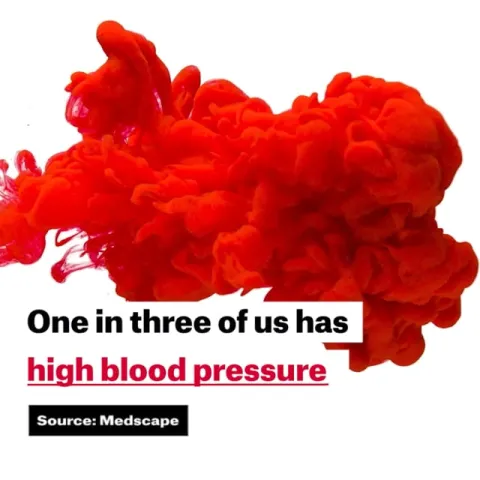Warning, this food will poison you
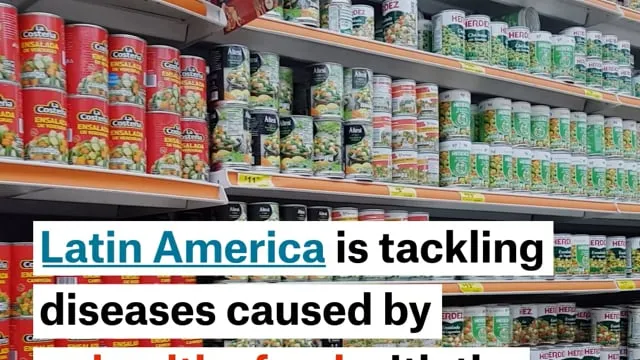
Many ultra-processed foods contain high levels of sugars, salt and fats, which directly increase the risk and prevalence of obesity and many other NCDs. Front-of-package labels warn consumers of poor nutrition in food.
Ultra-processed food is poisoning us
In the past few decades, ultra-processed foods and drinks have arrived to virtually every community around the globe, taking the place of healthier, more traditional diets. This increased availability — combined with aggressive marketing by the junk food industry — has dramatically changed the way the world eats and drinks. And this has had major effects on our health.
Many of these packaged, processed foods contain high levels of added sugars, sodium, and fats, which directly increase the risk and prevalence of obesity and other chronic, diet-related conditions. For example, consuming too much sugar increases the risk of developing type 2 diabetes, heart disease, liver and kidney damage, and some cancers. Excessive sodium is closely linked with high blood pressure and increased risk of heart disease, stroke, and death. And consumption of saturated and trans fats has been a major driver in the global obesity epidemic and increases in other diet-related noncommunicable diseases (NCDs) worldwide. Globally, unhealthy diets are estimated to be responsible for 11 million preventable deaths per year – over a quarter of total deaths from NCDs.
In spite of the serious health risks, consumption of ultra-processed foods is increasing worldwide, due to food industry strategies. In general, they are priced relatively cheaply and made widely available, even in places and communities where healthier choices like fresh fruit and vegetables are not. They are intensively promoted with advertising and price promotions across all media, often targeting children, young people and poorer communities. There is also a lack of awareness on the dangers of ultra-processed food and drinks, and a need for easy-to-understand nutritional information on what our food contains.
Many governments are trying to improve their population health by making sure better nutrition information is available, where and when it matters most: at the supermarket. Front-of-package nutrition labels that give clear warning of excessive sugars, salt, fat and other harmful nutrients help consumers to make healthier choices and denormalise unhealthy food. These labels also have the aim to pressure food and drink producers to reformulate their products to be healthier, by reducing or replacing harmful ingredients. In some cases, warning labels also prohibit producers from labelling their products with misleading claims, such as ‘healthy’ or ‘natural’.
Food labelling - in the hands of the consumer
Front-of-package labelling schemes have been introduced by governments in over 40 countries around the world, and are being considered in many more. Countries with mandatory front-of-package labelling include Chile, Mexico, Peru, Uruguay, Ecuador, Israel, Iran, Sri Lanka, and Thailand, and mandatory labels will soon be implemented in Argentina, Colombia, Brazil, Venezuela, and Singapore, with others following suit. However, in most cases, labels are still voluntary, which means producers of unhealthy food products can choose not to include the labels.
One of the most effective labels has been the black octagon introduced by Chile and replicated by Peru, Uruguay, Mexico and soon to be in force in Argentina. These black signs serve as more than just information. They are true warning labels, making it easy for shoppers to identify products that contain excessive amounts of harmful fats, salt and sugar.
Many front-of-package label schemes have been designed worldwide with different purposes. However, studies comparing these systems have shown that warning labels are the most effective when it comes to reducing the purchase of products with excessive amounts of unhealthy ingredients. For example, there was a 26.7% decrease in sugar purchases, 36.7% in sodium purchases, and 23.8% in calorie purchases in Chile two years after the labels were implemented. It’s a similar case to the warning labels that are now obligatory on tobacco products in most countries, and the lower rates of tobacco use that followed them.
But warning labels are not the only action governments can take to cut down consumption of health-harming foods and drinks and limit their attractiveness and availability to kids. Some countries have implemented measures like banning the sale and marketing of junk food in or near schools, banning ads for these foods on television during key hours for kids, and taxing beverages that are excessively high in added sugar – and are seeing healthy results.
To address all forms of malnutrition and diet-related conditions, we need countries to take bold policy action – without interference from the food and beverage industry. Front-of-package warning labels that are mandatory, highly visible and easy-to-understand play an important part, guaranteeing consumers' right to information and helping them to make informed decisions that affect their health.

